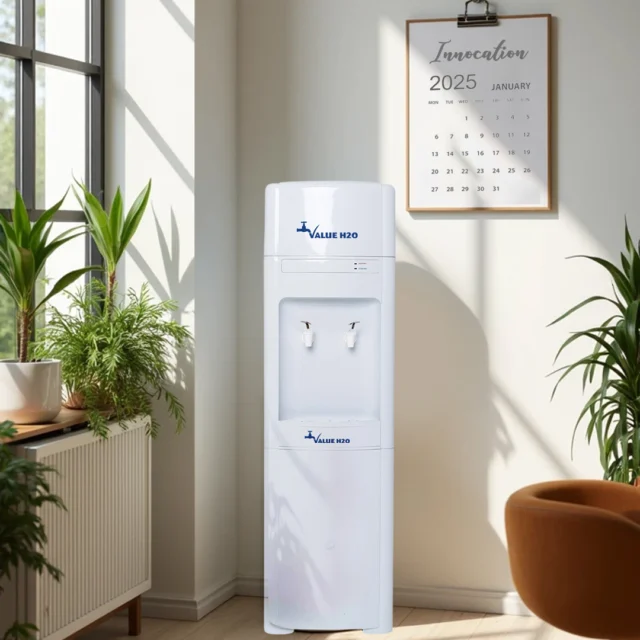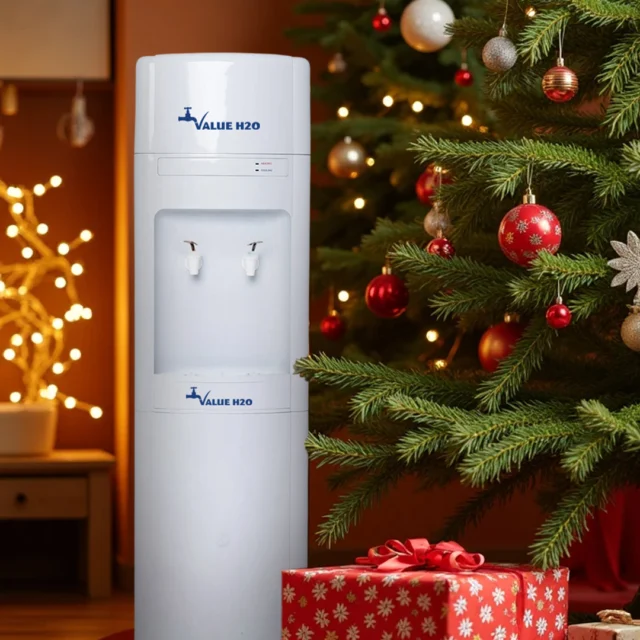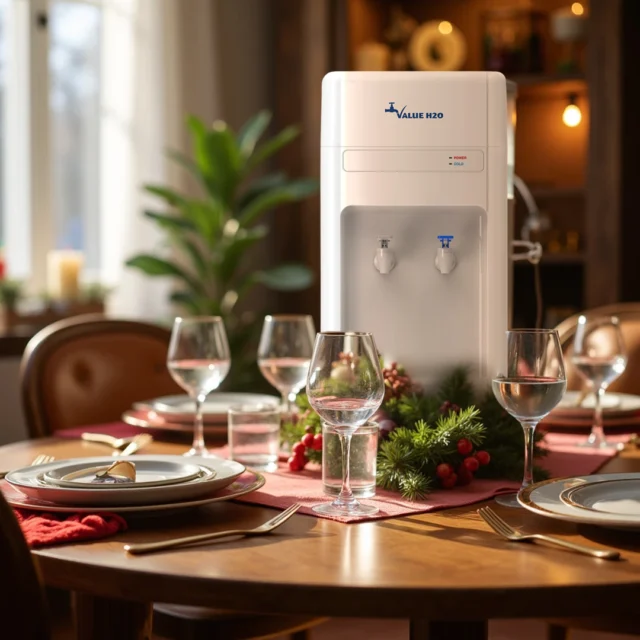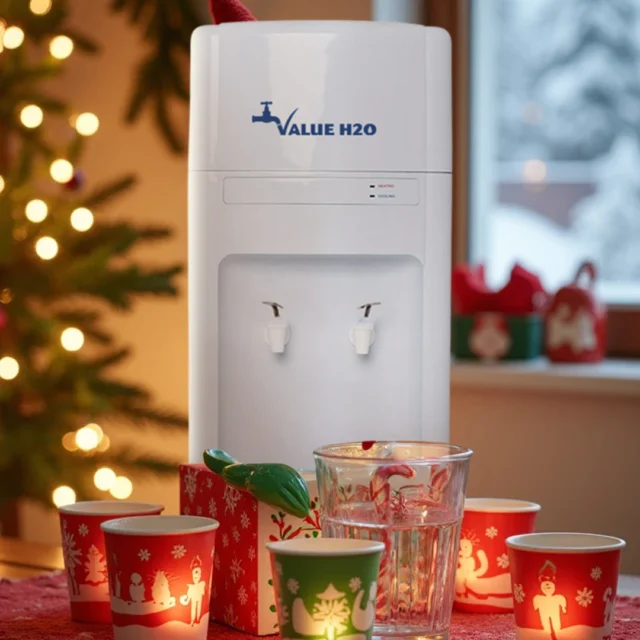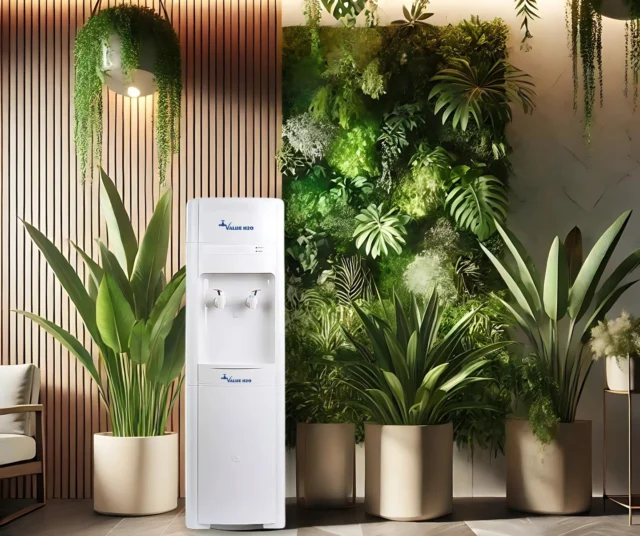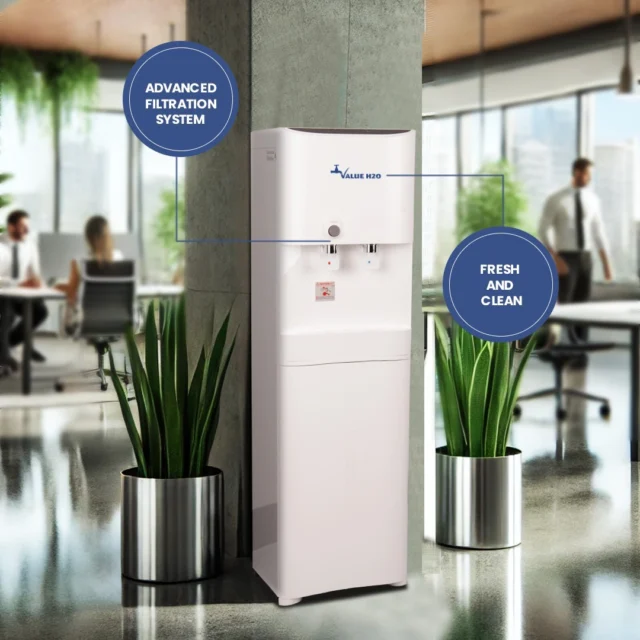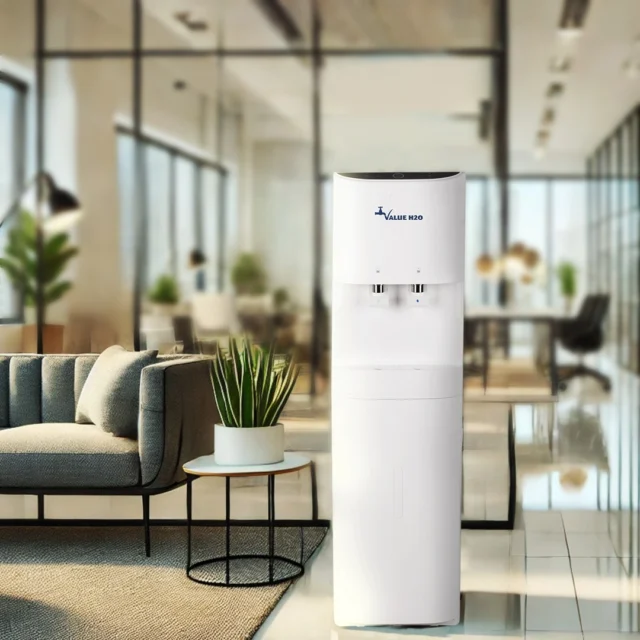Cafeterias—whether in schools, hospitals, universities, or corporate settings—play a critical role in daily hydration for large groups of people. Traditionally, bottled water has been the go-to option due to its perceived convenience, hygiene, and portability. However, with growing concerns about environmental sustainability, rising costs, and practical storage issues, more institutions are looking for smarter alternatives. One solution gaining significant traction is the implementation of water coolers. In this article, we explore whether water coolers can effectively replace bottled water in cafeterias, and how Value H2O is helping facilities make this cost-effective and eco-conscious switch.
The Case Against Bottled Water
Bottled water is widely used in cafeterias for its familiarity and ease of distribution, but it’s far from ideal. Here are some of the challenges associated with continuing to rely on single-use bottled water:
- Environmental impact: Single-use plastic bottles contribute massively to landfill waste and ocean pollution. Even when recycled, the energy and emissions involved are significant.
- High recurring costs: Bottled water requires constant replenishment, which adds up in terms of purchasing, delivery, and disposal.
- Storage limitations: Storing bulk quantities of bottled water takes up valuable space that could be used more efficiently in busy cafeteria environments.
- Labour and logistics: Staff need to restock fridges, manage orders, and handle waste. This creates additional workload and operational inefficiencies.
With high traffic and daily consumption, cafeterias magnify the issues associated with bottled water use.
How Water Coolers Offer a Practical Alternative
Water coolers—especially mains-connected, bottleless models—are increasingly being adopted in cafeterias as a more sustainable and affordable alternative. Here’s why they work so well in high-use environments:
- Unlimited filtered water supply: Mains-connected systems offer uninterrupted access to fresh, clean water throughout the day.
- Reduced plastic waste: Coolers promote the use of reusable cups and bottles, supporting sustainability goals and reducing environmental impact.
- Minimal storage needs: With no need to store cases of bottled water, cafeterias can use space more efficiently.
- Lower operational costs: After the initial installation, water coolers are far more economical than purchasing bottled water regularly.
- User-friendly design: Modern coolers provide both chilled and ambient water at the push of a button, with options for touchless dispensing and varied fill levels.
Value H2O’s commercial-grade water coolers are specifically designed for high-traffic environments like cafeterias, offering consistent performance and durability.
Hygiene and Safety Considerations
Maintaining hygiene in shared hydration systems is essential—especially in cafeterias serving schools, hospitals, or aged care centres. Value H2O addresses these concerns with:
- Advanced multi-stage filtration systems that remove chlorine, heavy metals, bacteria, and unpleasant odours.
- Optional touch-free dispensing systems to reduce the risk of cross-contamination.
- Scheduled maintenance services to ensure the unit is always clean and functioning properly.
When cleaned and serviced regularly, modern water coolers meet—and often exceed—the hygiene standards associated with bottled water.
User Experience and Accessibility
Hydration in cafeterias needs to be fast, easy, and inclusive. Water coolers meet these demands with:
- High flow rates to minimise queues and wait times
- Ergonomic design for easy use by children, the elderly, or people with disabilities
- Clear signage and intuitive functionality so everyone can use them with confidence
Some Value H2O models also include hot water dispensing, making them suitable for staff lounges or spaces where tea and instant meals are served.
Environmental and Brand Benefits
Replacing bottled water with water coolers demonstrates a commitment to sustainability that’s increasingly important to staff, students, and customers alike. This decision can:
- Help institutions meet waste reduction targets and sustainability goals
- Qualify for green building certifications or environmental accreditations
- Position the organisation as a leader in responsible resource management
- Reduce the amount of rubbish collected by cleaning and maintenance teams
With global momentum behind ESG initiatives and environmental accountability, switching to Value H2O’s water coolers sends the right message.
Cost Savings and Long-Term Value
While installing water coolers requires an initial investment, the long-term savings are substantial:
- No need to continuously purchase bottled water
- Reduced refrigeration and storage needs lower energy bills
- Lower labour costs due to less handling and waste management
- Predictable monthly costs with Value H2O rental and service plans
Many organisations report full return on investment within the first 12 months—especially in busy facilities where hydration is a daily necessity.
Conclusion
Yes—water coolers can absolutely replace bottled water in cafeterias. They offer a smarter, more sustainable solution that cuts costs, reduces environmental impact, and improves the overall hydration experience. Value H2O provides commercial-grade water coolers that meet the specific needs of high-traffic spaces, backed by expert maintenance and support. If you’re ready to make the shift from plastic to practical, water coolers are the way forward.
FAQs Answered:
Are water coolers more cost-effective than bottled water in cafeterias?
Yes, water coolers—especially bottleless models—are significantly more cost-effective over time. With Value H2O’s plumbed-in systems, cafeterias avoid the ongoing expense of purchasing bottled water and handling deliveries. Once installed, our coolers provide a consistent supply of filtered water at a fixed cost, helping cafeterias reduce overheads while improving efficiency.
How do water coolers impact the environmental footprint of cafeterias?
Switching to Value H2O water coolers dramatically reduces single-use plastic waste and the emissions associated with bottling and delivery. Our bottleless systems promote reusable drinkware and support environmentally conscious operations, helping cafeterias meet sustainability goals and contribute to a cleaner planet.
What are the hygiene considerations when using water coolers in food service areas?
Value H2O water coolers are designed with hygiene in mind. They feature advanced filtration systems that remove contaminants and improve taste, and optional touch-free dispensing models further reduce contact and potential contamination. We also offer scheduled servicing to keep units clean and compliant with food service hygiene standards.
Can water coolers provide sufficient capacity for high-traffic cafeterias?
Absolutely. Value H2O offers a range of commercial-grade water coolers built for high-volume use. These units are designed to handle continuous demand, providing chilled and ambient water throughout the day without interruption—making them ideal for busy cafeteria environments.
What maintenance is required for water coolers in cafeteria settings?
Maintenance for Value H2O coolers is straightforward. Most models require filter changes every 6–12 months, and our optional maintenance plans include regular servicing and cleaning to ensure optimal performance. This keeps the water fresh, the system efficient, and your cafeteria running smoothly.
